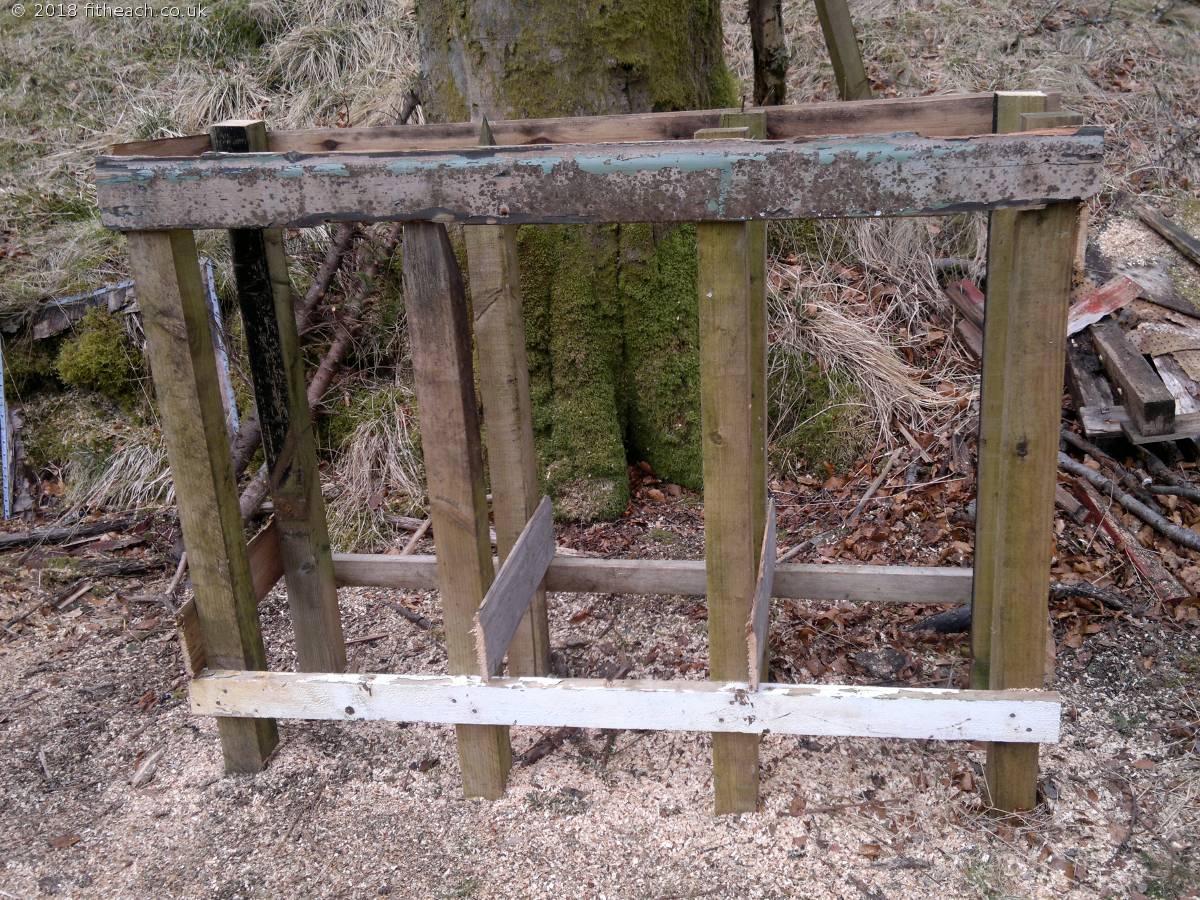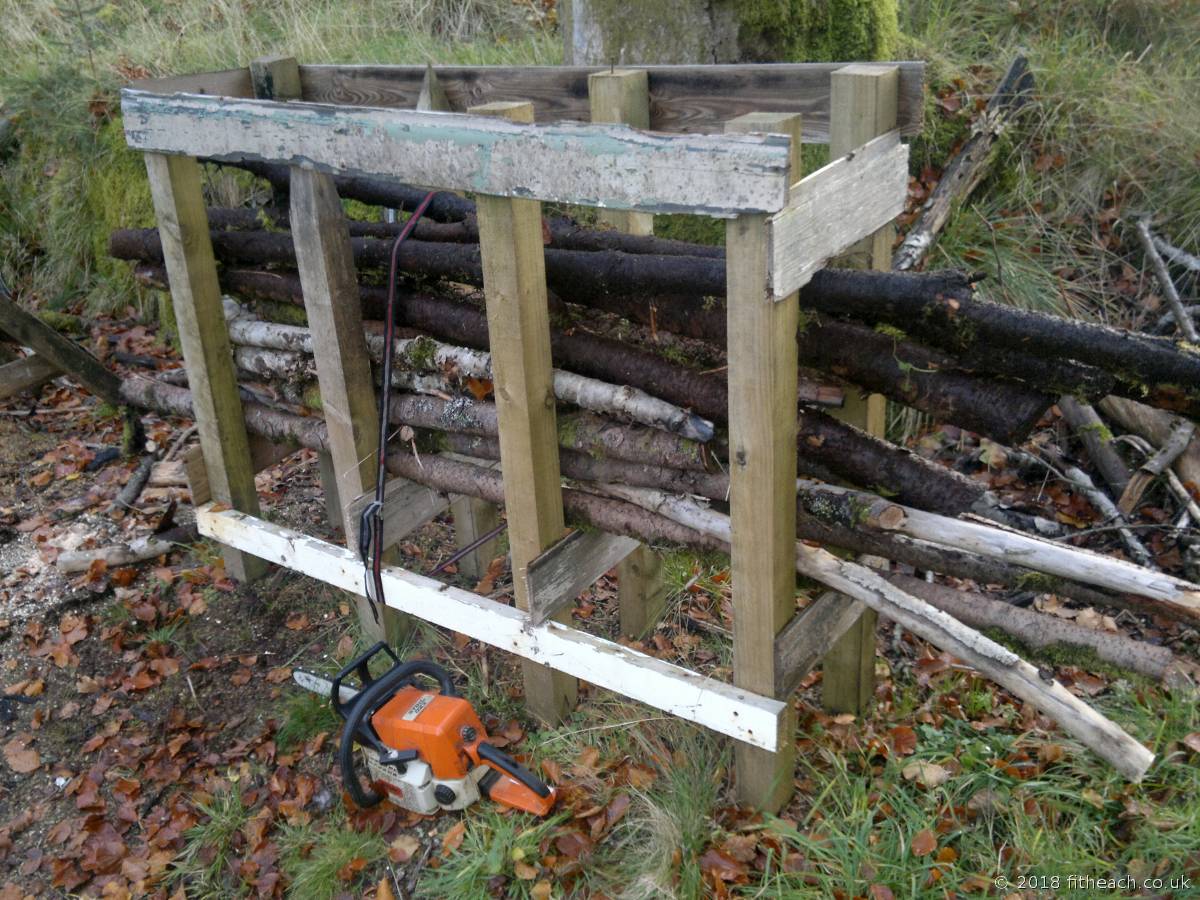Limbing produces a lot of relatively small branches, which although useful firewood, is time consuming and difficult to handle. The problem is that the branches need to be held in place while I cut them with the chainsaw. As the branches are thin, I might cut through them in a second or two. I then need to put aside the chainsaw, re-position the branch, secure the branch in place, pick-up the saw, cut the next section of branch, re-position the branch... Well, you get the idea. This process is hugely inefficient.
Disclaimer: this post describes what I do to process wood, but in no way is advice which you should follow. If you hack your leg off doing something similar, don't come running to me.
I could cut the branches by hand using a bushman saw (bow saw), where I have one hand free to hold the branch, while the other is used for cutting. This does save me from having to secure the branches and dealing with the chainsaw. However, cutting by hand is much slower, and eventually is tiring. I needed a solution where I have the speed of cutting provided by the chainsaw, without the need to constantly re-position and secure the branches.

The finished construction, ready to be used for cutting branches
I have devised a really neat solution, that enables me to cut the branches efficiently, for almost no cost and is both easy to construct and repair. All I needed was eight fence posts, a handful of nails and some scrap pieces of wood to form the frame. The basic idea is to create a rectangular frame which holds several branches, and then, using the chainsaw I can cut the whole lot into stove sized lengths in one operation.
The crucial part of the design was positioning the upright fence posts so that the distance between them allowed me to cut the branches into lengths of about 45cm. This is the optimum length of log, for use in our wood burning stove. The distance (depth) between each pair of fence posts is also important. The depth is determined by the maximum cutting length of the chainsaw. My old Stihl 023 has a 35cm bar, of which about 30cm is available for cutting. Once the depth is determined, each pair of fence posts need to be equally spaced.

The cutting frame loaded with branches (mostly spruce).
The whole construction took just over one hour. I used some scrap pieces of wood for the frame, as it won't matter if I accidently cut though them. I also made sure that there were no nails protruding into the cutting areas.
I then just fill the frame with some branches. Spruce branches work best, as they tend to be fairly straight, but with a slight curvature. Some deciduous tree branches, particularly beech, have very irregular shapes which don't fit well. On some ocassions I might fill the frame within a few minutes, on others I might do it over the course of a few days. It really depends on what wood I am processing. The great thing is, it doesn't really matter how long the branches sit in the frame.

The branches after cutting into the required log lengths
Once the frame is full, I secure the branches, in the middle section, with a self-locking strap. Next, I square-off any branches that are protruding at either end by cutting them with the chainsaw. I do this, so that I don't inadvertently get some extra-long logs. Finally, I make cuts in the middle sections between each pair of fence posts, giving me my desired log lengths. The whole cutting process takes no more than two minutes.